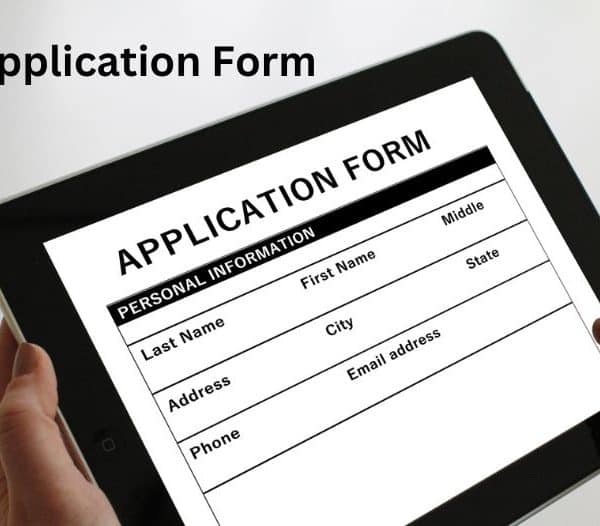The UPSC Mains 2021 examination will begin on January 7, 2022. Aspirants must select one optional subject, which has two papers. On January 16, 2022, optional topic Paper I was held in the morning session (9 a.m. to 12 p.m.), and optional subject Paper-II was held in the afternoon session (2 p.m. to 5 p.m.).
Papers VI and VII of the Mains exam must be completed for a total of 250 points. Each paper has a three-hour time limit. Let’s look at the history optional mains paper below.
Also Read: Fastest Hypersonic Cruise Missile in the World: Must-Know Things for UPSC IAS Preparation
UPSC History Optional Paper 2021
Candidates studying for the UPSC Civil Services Examination should review UPSC previous year question papers at all times. It’s critical to understand the kind of questions offered on the UPSC exam.
Only by understanding what will be asked on the exam will you be able to successfully prepare for it. UPSC Previous Year Question Papers are the greatest source for this!
In this article, we have compiled UPSC previous year question questions, UPSC History Mains, 2021. To get the paper, simply click on the link provided. The value of UPSC previous year question papers in Civil Services preparation is also addressed below.
UPSC History Optional Question Paper 2021
#Identify the following places marked on the map supplied to you and write a short note of about 30 words on each of them in your Question-cum-Answer Booklet.
Locational hints for each of the places marked on the map are given below seriatim: [50 Marks]
(i) Paleolithic site
(ii) Mesolithic site
(iii) Neolithic site
(iv) Neolithic-Chalcolithic site
(v) Harappan site
https://crackingcivilservices.com/
(vi) Proto-historic and historic site
(vii) Inscriptional site
(viii) Jain monastic site
(ix) Coin hoard
(x) Paleolithic site
(xi) Terracotta site
(xii) Rock-cut caves
(xiii) Ancient learning centre
(xiv) Political and cultural centre
(xv) Buddhist site
(xvi) Ancient port
Prove your humanity
Ask query
(xvii) Early historic site
(xviii) Ivory hoard
(xix) Buddhist monastic centre
(xx) Temple complex
Question 2
(a) Do you agree that ecological factors influenced the now and ebb of the Harappan Civilization? Comment. [15 Marks]
(b) Do you consider that the Upanishadic principles embody the high point of Vedic religious thought? Comment. [15 Marks]
(c) Analyze the significance of external influences and indigenous development on post- Mauryan art. [20 Marks]
Question 3
(a) Will it be proper to consider the Megaliths to represent a single, homogenous or contemporaneous culture? What kind of material life and cultural system is revealed in the megalithic cultures? (15 Marks]
(b) How would you characterize the nature of the Mauryan state based on Kautilya’s Arthashastra? [15 Marks]
(c) How did the Varnashrama Dharma manifest the increasing social complexities in the Gupta and post-Gupta period arising from social and economic developments? I20 Marks]
Question 4
(a) “The political and economic needs of rulers, combined with economic and status needs of the merchant class together provided the receptive cultural milieu in which Buddhism flourished” Comment. (15 Marks]
(b) A large number of land grants in hitherto non-arable tracts invariably meant the expansion of agriculture in early medieval India. How did the management of hydraulic resources (different types of irrigation works) facilitate the expansion of agriculture in this period? [15 marks]
(c) Discuss the relationship between the emergence of literature in vernacular languages and the formation of regional identities in early medieval India. [20 Marks]
UPSC Mains 2021 Optional Paper 2
Also Read: Global Hunger Index 2021 UPSC: Let’s Grab the Knowledge for the UPSC Preparation!
Question 1
Critically examine the following statements in about 150 words each: 10×5=50
(a) The introduction of Western education transformed India in unforeseen ways. 110 Marks]
(b) Tipu Sultan had little success in setting forth a course of change significantly different from the general experience of the 18th-century crisis of Indian politics and society where public life tended over and over to become a system of plundering. l10 Marks]
(c) The Vernacular Press Act of 1878 was designed for better control of the vernacular press and to empower the government with more effective means of punishing and repressing seditious writings. [10 Marks]
(d) The rise of the Communist Movement in India in the 1920s lent a militant and revolutionary content to the Trade Union Movement. (10 Marks)
(e) In the first decade of the 20th century, the atmosphere was ripe for the emergence of revolutionary groups to fill up the vacant space in the political map of the country. [10 Marks]
Question 2
(a) India has been the world leader in the field of handspun and handwoven yarn and cloth for many centuries. Many nationalist and Marxist critiques considered that the British dominion deliberately shattered the traditional and world-famous handicrafts of India. Comment. (20 Marks]
(b) What were the various ways in which nationalism manifested itself in India during colonial rule? l20 Marks]
(c) The East India Company had thought that they had found an ideal puppet in Mir Kasim, Mir Kasim, however, belied the expectation of the company. Examine critically. [10 Marks]
Question 3
(a) How did the English utilitarian thinking impact India in the British era? I20 Marks]
(b) The same Gandhiji who withdrew the Non-Cooperation Movement on the issue of violence at Chauri-Chaura, refused to condemn people’s violence during the Quit India Movement. Do you think that he was losing faith in the efficacy of non-violence and was willing to deviate from this path? Elucidate. (20 Marks]
(c) While individually the Marathas were clever and brave, they lacked the corporate spirit so essential for national independence. Discuss with reasons. I10 Marks]
Question 4
(a) Discuss the major constitutional developments in India after 1858 and their impact on society and polity. (20 Marks]
(b) Discuss the changing nature of Dalit assertion in India in the twentieth century. [20 Marks]
(c) How was the Princely States integrated into the Indian Union after the partition? What role did Sardar Patel play in it? [10 Marks]
Also Read: Currency Swap UPSC: Check Out the Best UPSC Notes to Ace the Prestigious Examination!
UPSC History Optional Paper 2021
#Aspirants are advised to begin their preparation with the NCERTs, which contain critical information on all historical events in chronological order. NCERTs are also written in an easy-to-understand style.
#Make a list of all important dates and events, as they are an important element of the planning.
#Examine past year’s question papers to obtain a sense of the types of questions that will be asked.
#To avoid any confusion, make sure you grasp the current topic completely before moving on to the next one. If you’re studying the Unification of Europe, for example, spend enough time learning about the subject before moving on to the Rise of the Unipolar World and the Disintegration of the Soviet Union.
UPSC Exam Preparation
#Concentrate on numerous tourists who have visited India at various eras in the past. For example, Al Biruni, Fa Hein, and others. During their time in India, they made observations about Indian society, economy, and politics.
#Apart from the aforementioned pointers, it is critical to practise maps regularly, since they can help you get good grades if well prepared.
Best Books for History Optional Preparation
#India’s Ancient Past by R.S Sharma
#Ancient and Early Medieval India: Upinder Singh
#Ashoka and Decline of the Mauryas by Romila Thapar
#Medieval India: From Sultanate to Mughals I by Satish Chandra
#Medieval India: From Sultanate to Mughals II by Satish Chandra
#Modern India by Bipin Chandra
#India After Gandhi by Ram Chandra Guha
Also Read: ISFR Report 2021 UPSC: Preparation for Geography or Environment Topic for UPSC Exam
Connection to Polity and Economics
While writing answers, establishing a connection to present times’ polity and economics will give worth to your answers. When discussing the industrial revolution, for example, it is important to remember that many of the things that are done mechanically now were done manually before the industrial revolution.
You might also discuss how the beginning of the industrial revolution resulted in the expansion of urban settlements as well as poverty in European cities. This is comparable to the dilemma of poverty and urban migration that exists in Indian cities today.
Maps
You should practise maps regularly if you want to do well in this section. It is recommended that you consult numerous sources for this section because some sources may not provide accurate information. Only by putting in a lot of practice time will you be able to master this section.
Following the aforementioned guidelines will undoubtedly produce fruit and result in good grades in the History optional. Apart from that, studying world history newspapers and journals, as well as gathering knowledge from various sources, will assist you in mastering world history issues. This will aid you in crafting good answers and improve your grades.
Conclusion
The entire page contains all of the material and preparation advice for the UPSC history optional 2021 exam paper. If you seek additional knowledge about UPSC preparation or any section of the UPSC test, UPSC Pathshala is the finest option for guidance and resolutions.
The website offers several blogs produced by reliable sources about various aspects of UPSC preparation so that you can pass the exam and reach your ideal destination. Because this is the most difficult examination and the paper has the most competition, you can also obtain help with a variety of questions. For all of your questions, you’ll need the best responses.
Also Read: Brahmos Missile UPSC: UPSC Exam Preparation Topic and Notes for GS1 Paper







